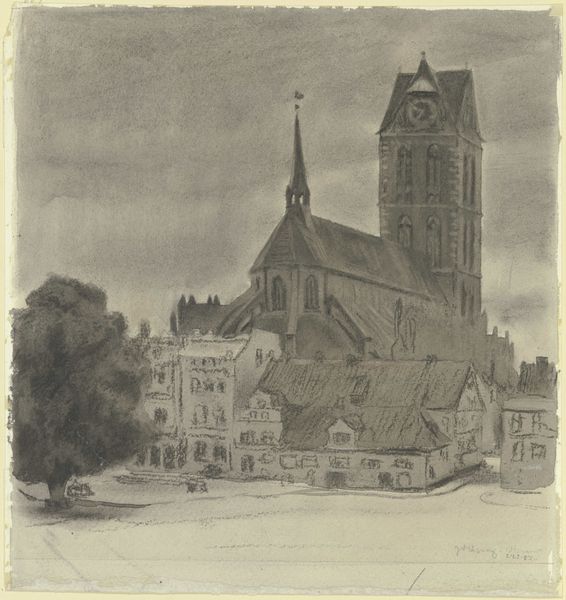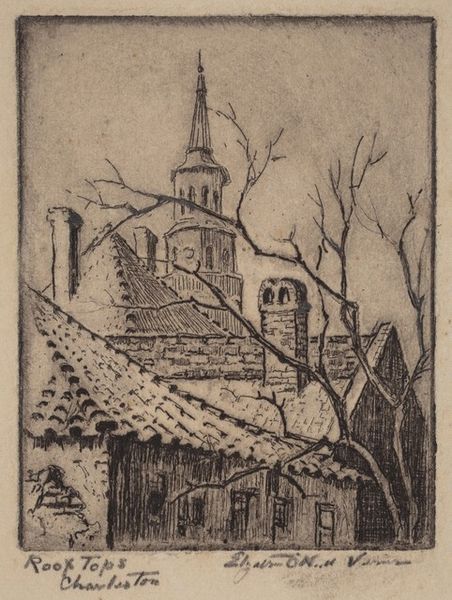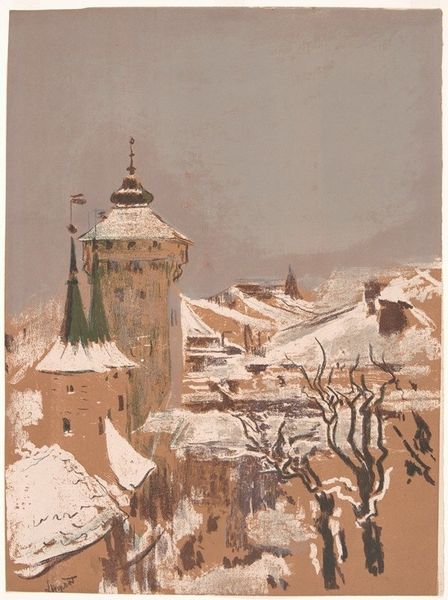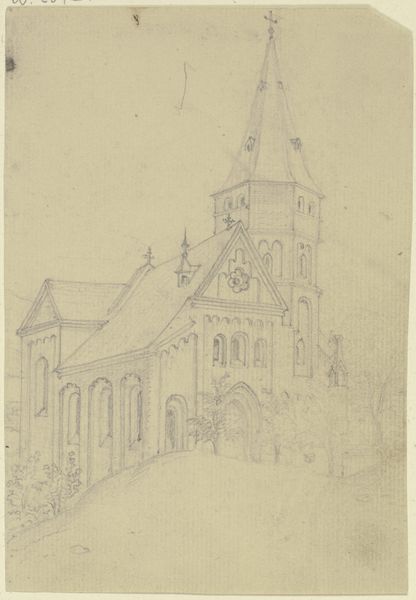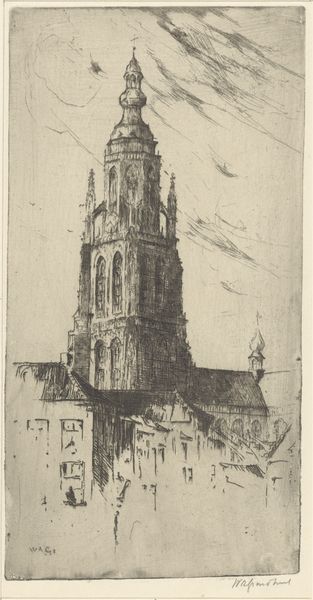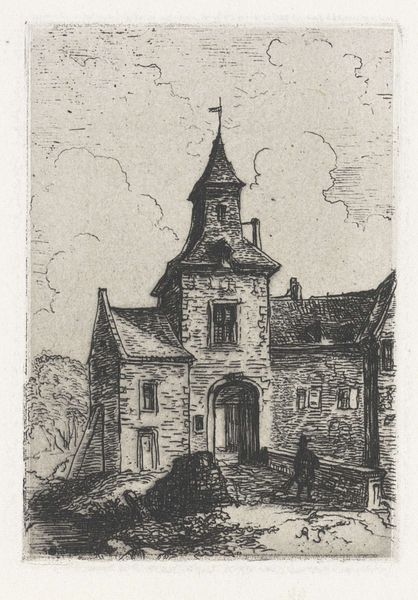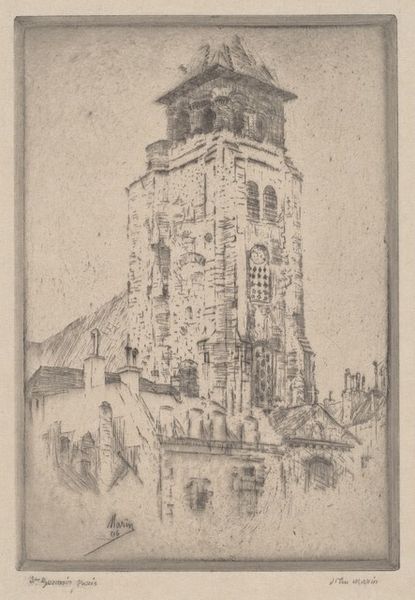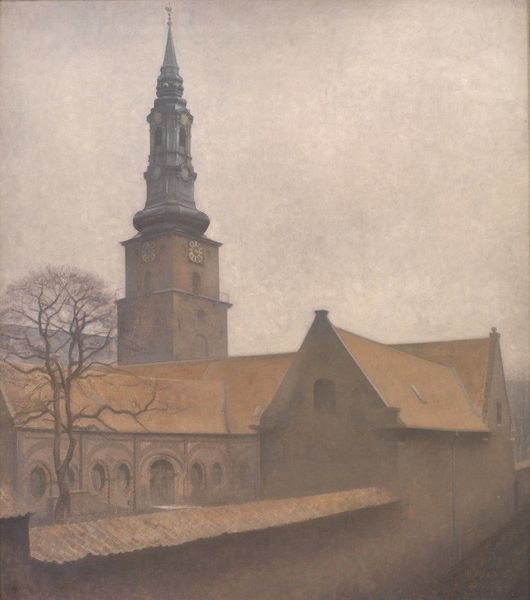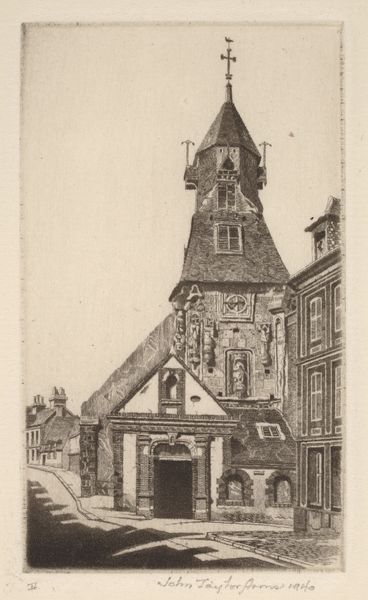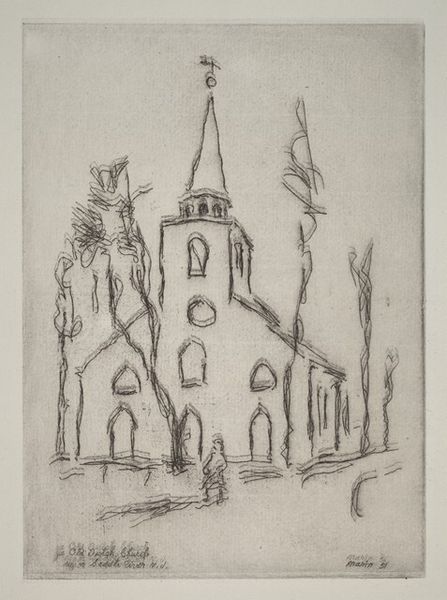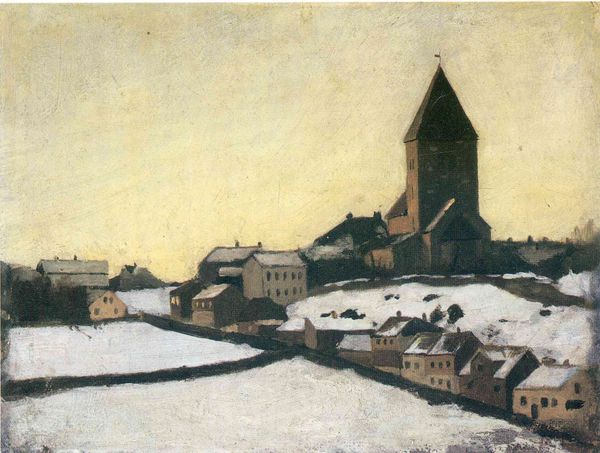
Copyright: Public Domain: Artvee
Editor: So, this is Leon Wyczółkowski's "Corpus Christi Church in Krakow," a watercolor and pencil piece from 1903. The limited color palette, that reddish monochrome, makes the building seem imposing, almost ominous. What do you see in this piece? Curator: It's fascinating to consider how Wyczółkowski positions religious architecture within a specific socio-political context. Krakow, at the turn of the century, was a city grappling with Polish identity under foreign rule. Does the artist perhaps portray the Church, usually a symbol of hope, as monolithic, a potentially stifling force in that environment? Editor: That's a really interesting point! I hadn't considered the political element. I was just thinking about the composition itself – how the lines are almost aggressively sketched, not at all soft and romantic. Curator: Exactly. That bold technique is very deliberate, and speaks to the broader social role of art at that time. Were artists expected to passively record reality, or actively engage with the complex issues facing their communities? Notice how the perspective seems skewed, like the building is bearing down on the viewer. Do you think that choice amplifies the feelings about social control? Editor: I think it does! It definitely feels more intentional now, knowing more about the context. At first glance, it just looked like an Impressionist sketch, but it’s clearly saying more. Curator: The politics of imagery are always at play, even, or perhaps especially, in what seem like simple landscape paintings. Watercolors weren't just pretty pictures, were they? Editor: Definitely something to consider as I view other works, especially around that era. Thank you for this. Curator: My pleasure. It's important to remember that museums and galleries also shape our understanding; this is another layer in our interpretation of historical artwork.
Comments
No comments
Be the first to comment and join the conversation on the ultimate creative platform.
